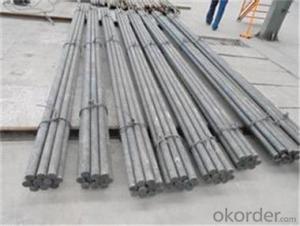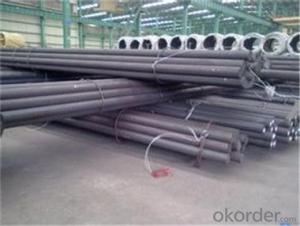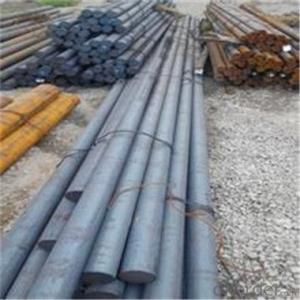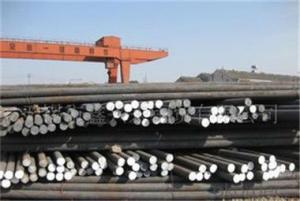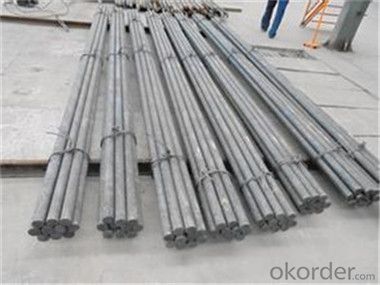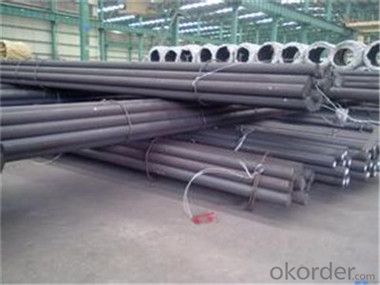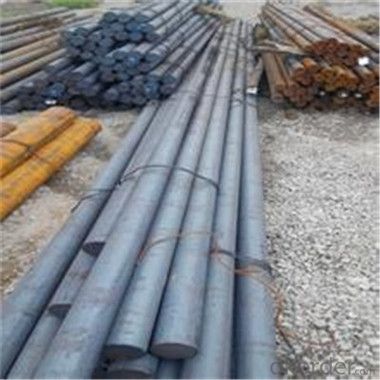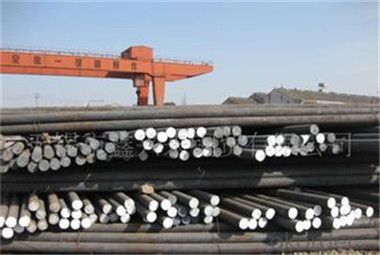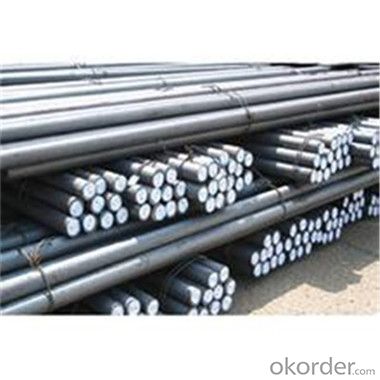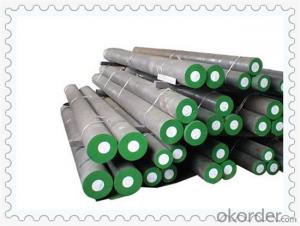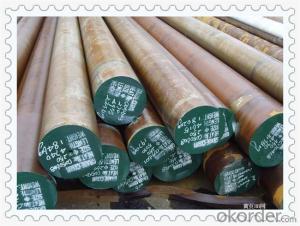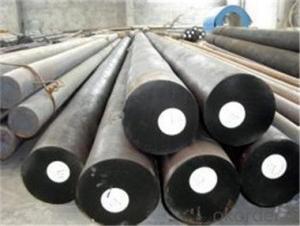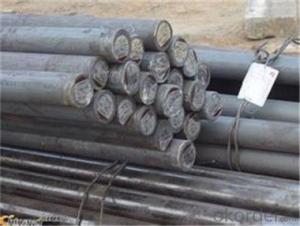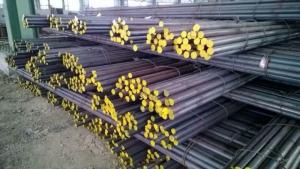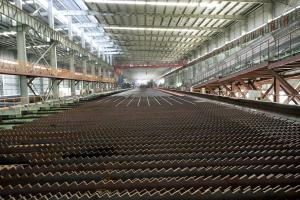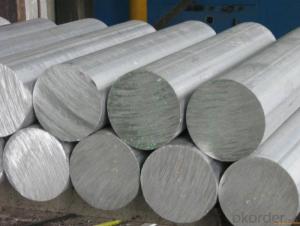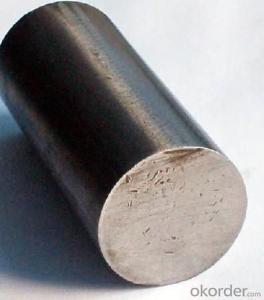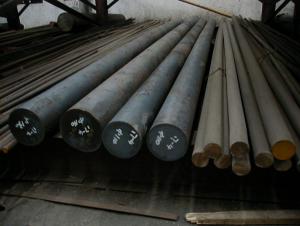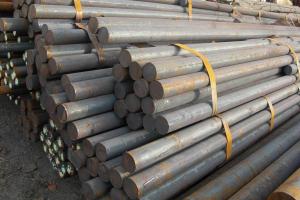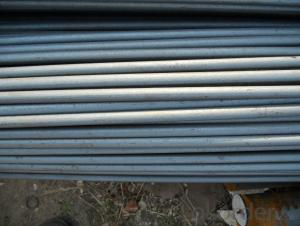Hot Rolled Carbon Steel Round Bar MS Bar -China CNBM
- Loading Port:
- Tianjin
- Payment Terms:
- TT OR LC
- Min Order Qty:
- 667 m.t.
- Supply Capability:
- 2000000 m.t./month
OKorder Service Pledge
OKorder Financial Service
You Might Also Like
Description of steel round bar:
1. Commodity: Round steel bar
3. Technical: Hot rolling
2. Length: Min. 5.8meter, according to requirement.
3. Diameter: 16mm-250mm
5. Packing: In Bundle or according to your requirements.
Festures of steel round bar:
Description : Steel Bar/Stainless Steel Round Bar/Alloy Steel Round Bar/Carbon Steel Bar
Stainless Steel Bright Bar/Stainless Steel Peeled Bar/Stainless Steel Polishing Bar
Diamater:
1 Hot rolled round bar diameter from 5.5mm to 110mm
2.Hot forged round bar diameter from 110mm to 400mm
3.Cold drawn round bar diameter from 2.0mm to 60mm
Specifications of steel round bar:
Length: standard 6m,9m,12m, or as customers' requirement
Surface: Black, polished, grinded, ,Bright, Turn smooth(Peeled),Brush,Mill,Pickled
Process:Hot rolled,cold drawn,forged
Images of steel round bar:
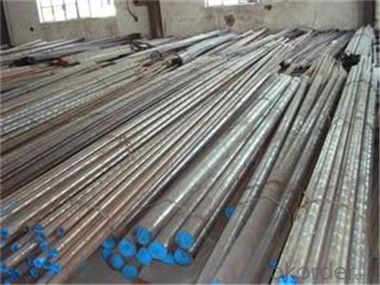
FAQ:
1. How long is the lead time?
Delivery time: 45 days after order confirmed.
2. What payment term do you accept?
Payment: T/T or L/C at sight.
- Q: Can steel round bars be coated for improved aesthetics?
- Yes, steel round bars can be coated for improved aesthetics. Coating steel round bars can enhance their appearance by providing a more polished and visually appealing surface. There are various coating options available, such as powder coating, electroplating, or painting, which can be applied to steel round bars to achieve different aesthetic effects. These coatings not only enhance the appearance of the bars but also provide additional benefits such as corrosion resistance and durability. Therefore, coating steel round bars is a common practice to improve their aesthetics in various applications including architectural, decorative, and industrial purposes.
- Q: What are the advantages of using low-alloy steel round bars?
- One advantage of using low-alloy steel round bars is its increased strength and durability compared to regular carbon steel. This makes it suitable for applications that require high tensile strength and resistance to wear and tear. Additionally, low-alloy steel round bars generally offer better weldability and machinability, allowing for easier fabrication and modification. Overall, low-alloy steel round bars provide a cost-effective solution for various industries, including construction, automotive, and manufacturing.
- Q: How about tempering No. 45 round bar?
- Quenched and tempered steel has two major categories: carbon quenched and tempered steel and alloy quenched and tempered steel. Carbon steel or alloy steel, the control of carbon content is relatively strict. If the carbon content is too high, after quenching and tempering the strength of the workpiece is high, but the toughness is not enough, such as carbon content is too low, toughness and lack of strength. In order to make the quenched and tempered parts get good comprehensive performance, the total carbon content is controlled at 0.30~0.50%.
- Q: What are the different types of steel round bars used in the automotive braking systems?
- There are several different types of steel round bars that are commonly used in automotive braking systems. These types of steel are specifically chosen for their strength, durability, and ability to withstand the high temperatures and pressures that are generated during braking. One commonly used type of steel round bar is carbon steel. This type of steel is known for its high strength and excellent hardness. Carbon steel round bars are often used in the manufacturing of brake rotors and brake drums. They are able to withstand the friction and heat generated during braking, ensuring reliable performance and longevity. Another type of steel round bar used in automotive braking systems is stainless steel. Stainless steel is highly resistant to corrosion and rust, making it ideal for brake lines and fittings. It also has good heat resistance properties, allowing it to withstand the thermal stresses generated during braking. Some automotive braking systems also utilize alloy steel round bars. Alloy steel is a combination of different metals, such as chromium, nickel, and molybdenum, which enhance its mechanical properties. Alloy steel round bars are known for their high tensile strength and toughness, making them suitable for applications that require a high level of performance and durability. In addition to these commonly used types of steel round bars, there are also specialized types that are designed for specific applications within automotive braking systems. For example, heat-treated steel round bars are used in the manufacturing of brake calipers and pistons, as they can withstand the extreme temperatures generated by the friction between the brake pads and rotors. Overall, the choice of steel round bar in automotive braking systems depends on the specific requirements of the application, such as strength, durability, heat resistance, and corrosion resistance. By selecting the appropriate type of steel, automotive manufacturers can ensure the safety and reliability of their braking systems.
- Q: What are the different types of surface treatments for steel round bars?
- There are several types of surface treatments commonly used for steel round bars. These include hot-dip galvanizing, electroplating, painting, powder coating, and black oxide coating. Each treatment offers specific benefits and is chosen based on the desired level of corrosion resistance, aesthetics, and durability required for the application.
- Q: What is the maximum load capacity of a steel round bar?
- The maximum load capacity of a steel round bar depends on various factors, including the diameter, length, and grade of the steel. Steel round bars are designed to withstand different levels of stress and can have varying load capacities. Generally, the load capacity is determined by the yield strength and ultimate tensile strength of the steel. To determine the maximum load capacity of a specific steel round bar, it is necessary to consult engineering specifications or reference materials provided by the manufacturer. These specifications will provide the necessary information to calculate the load capacity based on the specific dimensions and properties of the round bar. It is important to note that load capacity calculations should be carried out by qualified professionals with a thorough understanding of structural engineering principles and material properties.
- Q: Can steel round bars be used for making transmission components?
- Yes, steel round bars can be used for making transmission components. Steel is a widely used material in the manufacturing industry, and it offers excellent strength, durability, and resistance to wear and tear. Round bars made of steel are commonly used in the production of transmission components such as gears, shafts, and couplings. The steel round bars are often machined or forged into the desired shape and then heat-treated to enhance their mechanical properties. The use of steel round bars ensures that the transmission components can withstand high loads, provide smooth power transmission, and have a long service life.
- Q: What are the different types of steel round bar sizes?
- There are various sizes available for steel round bars, each serving different purposes and applications. The most common steel round bar sizes range from 1/8 inch to 24 inches in diameter. These sizes are typically measured in inches, with each increment representing a larger diameter. For smaller projects or more intricate designs, steel round bars in sizes ranging from 1/8 inch to 1 inch are often used. These smaller sizes are commonly found in jewelry making, crafting, and smaller construction projects. For larger-scale applications such as structural support, manufacturing, or industrial projects, steel round bars with sizes ranging from 1 inch to 24 inches are utilized. These larger sizes provide enhanced strength and durability, making them suitable for heavy-duty use. It's important to note that steel round bars can also be found in metric sizes, which are measured in millimeters. Metric sizes are commonly used in regions that follow the metric system, such as many countries in Europe and Asia. The selection of the appropriate steel round bar size depends on the specific requirements of the project, including load-bearing capacity, structural integrity, and overall design. It's recommended to consult with an engineer or industry professional to determine the best size for your specific application.
- Q: How do you calculate the moment of inertia of a steel round bar?
- To calculate the moment of inertia of a steel round bar, you need to know its mass and the radius of gyration. The moment of inertia can be determined using the formula I = (1/4) * π * r^4, where I represents the moment of inertia and r is the radius of the round bar.
- Q: How do you calculate the moment of inertia for a steel round bar?
- To determine the moment of inertia for a steel round bar, one can utilize the equation for the moment of inertia of a solid cylinder. Denoted as I, the moment of inertia signifies an object's resistance to rotational changes. The equation for the moment of inertia of a solid cylinder is as follows: I = (1/2) * m * r^2 Where: - I represents the moment of inertia - m denotes the mass of the cylinder - r signifies the radius of the cylinder To calculate the moment of inertia for a steel round bar, it is necessary to possess knowledge of both the bar's mass and radius. The mass can be determined by multiplying the steel's density by the cylinder's volume. The volume of a cylinder is given by the subsequent formula: V = π * r^2 * h Where: - V symbolizes the volume - r stands for the radius - h represents the height or length of the round bar After obtaining the mass and radius, one can then substitute these values into the formula for moment of inertia to compute it. It is crucial to ensure unit consistency during this process (e.g., converting centimeters to meters if the radius is initially given in centimeters). It is important to note that the aforementioned formula assumes that the steel round bar is a solid cylinder. Should the bar possess a different shape or contain hollow sections, these factors must be taken into consideration when conducting the calculation.
Send your message to us
Hot Rolled Carbon Steel Round Bar MS Bar -China CNBM
- Loading Port:
- Tianjin
- Payment Terms:
- TT OR LC
- Min Order Qty:
- 667 m.t.
- Supply Capability:
- 2000000 m.t./month
OKorder Service Pledge
OKorder Financial Service
Similar products
Hot products
Hot Searches
Related keywords
